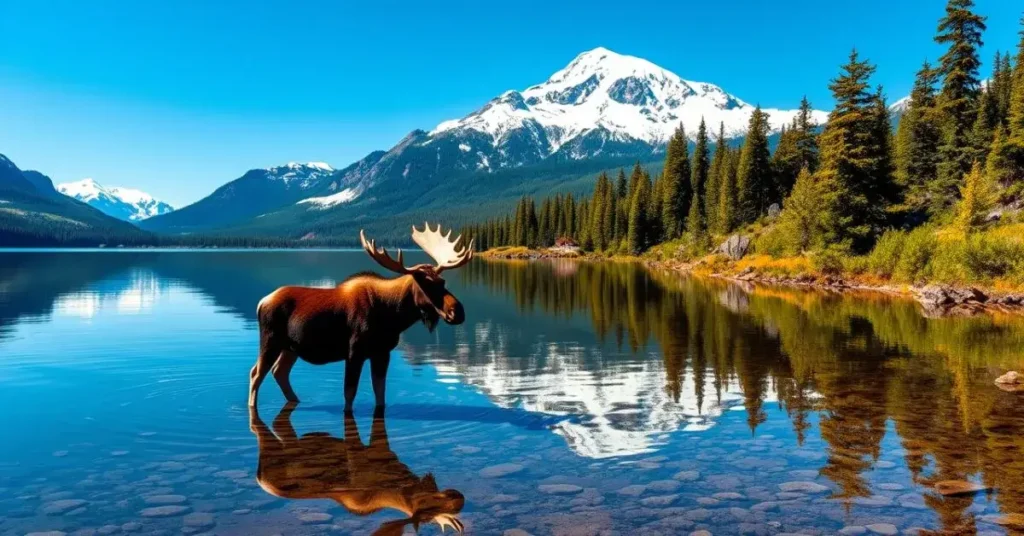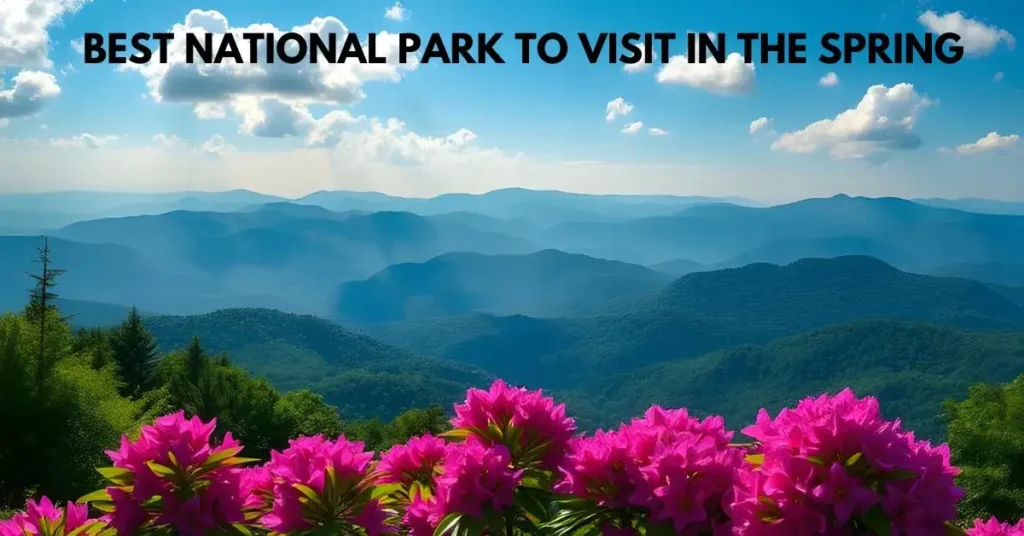You’ve packed your gear, booked the campsite, and dreamed of pristine vistas—but are you truly prepared for the hidden dangers lurking in America’s national parks? I’ll never forget my close call in Yellowstone’s backcountry when a bison charged just 20 feet from my tent. As a hiking guide with over a decade of experience, I’ve learned that even paradise has risks. This post isn’t about fearmongering; it’s about arming you with facts. Below, I’ll reveal the 10 deadliest national parks in America, why accidents happen, and how to stay safe. Because knowledge, my friend, is the best survival tool.
| Park | Location | Key Dangers | Annual Visitors |
|---|---|---|---|
| Denali | Alaska | Extreme weather, crevasses, altitude | 600,000+ |
| Grand Canyon | Arizona | Dehydration, falls, flash floods | 4.7 million |
| Yellowstone | Wyoming | Geothermal vents, bison, hypothermia | 3.3 million |
| Great Smoky Mountains | TN/NC | Drowning, car crashes, black bears | 13.3 million |
| Yosemite | California | Falls, rock slides, river currents | 3.7 million |
| Everglades | Florida | Alligators, hurricanes, venomous snakes | 1 million |
| Zion | Utah | Flash floods, cliff falls, heatstroke | 4.6 million |
| Mount Rainier | Washington | Avalanches, volcanic gases, crevasses | 1.5 million |
| Rocky Mountain | Colorado | Lightning, altitude sickness, avalanches | 4.1 million |
| Olympic | Washington | Coastal tides, hypothermia, mountain lions | 2.7 million |
Why Are National Parks Dangerous?
Think of national parks like a beautiful but unpredictable friend—they’re stunning, but they’ll keep you on your toes. Between 2010–2020, the National Park Service (NPS) reported over 1,000 fatalities across all parks. The culprits? Often it’s a mix of:
- Nature’s whims: Flash floods, extreme temps, and wildlife.
- Human error: Overconfidence, poor planning, or ignoring warnings.
- Remote terrain: Cell service is rarer than a polite raccoon at a campsite.
The 10 Deadliest National Parks
1 Denali National Park, Alaska
- Danger: Extreme weather (-40°F winters), crevasses, altitude sickness.
- Annual Visitors: 600,000+.
- Key Stat: 127+ climbing deaths since 1932; 11 fatalities in 2022 alone (NPS).
- Unique Threat: Sudden storms turn summits into freezers. Hypothermia kills within hours.
- Survival Tip: Pack a satellite communicator—rescue helicopters can’t fly in whiteout conditions.
- Wild Card: The park’s only medical clinic is 85 miles from the base camp.
2 Grand Canyon National Park, Arizona
- Danger: Dehydration, falls, flash floods.
- Annual Visitors: 4.7 million.
- Key Stat: 134 deaths in the last decade; 65% involved falls (CDC).
- Unique Threat: “Rim-to-Rim” hikers collapse from heatstroke near Phantom Ranch.
- Survival Tip: Drink 1 liter of water per hour in summer—the canyon bakes like a pizza oven.
- Wild Card: Rescue teams recover 20+ bodies yearly, mostly from the South Kaibab Trail.
3 Yellowstone National Park, Wyoming
- Danger: Geothermal vents, bison attacks, hypothermia.
- Annual Visitors: 3.3 million.
- Key Stat: 22 deaths from boiling springs since 1890; 5 bison goring incidents in 2023 (Yellowstone Historic Center).
- Unique Threat: Thin crusts over acidic pools can collapse under a toddler’s weight.
- Survival Tip: Stay on boardwalks—steam vents can melt hiking boots (yes, really).
- Wild Card: Bison charge at 35 mph. You won’t outrun them.
4 Great Smoky Mountains National Park, Tennessee/N. Carolina
- Danger: Drowning, car crashes, wildlife.
- Annual Visitors: 13.3 million—the most visited park.
- Key Stat: 35 deaths since 2020; 40% from vehicular accidents (NPS).
- Unique Threat: Slick roads cause 100+ crashes yearly on Newfound Gap Road.
- Survival Tip: Avoid night driving—fog reduces visibility to 10 feet.
- Wild Card: Over 1,500 black bears roam the park. They’ve broken into cars for gum wrappers.
5 Yosemite National Park, California
- Danger: Falls, rock slides, river currents.
- Annual Visitors: 3.7 million.
- Key Stat: 18 deaths in 2022; Half Dome’s cables claim 1-2 lives annually (NPS).
- Unique Threat: Mist Trail’s granite steps turn into an ice rink in winter.
- Survival Tip: Never climb during thunderstorms—lightning strikes peak in July.
- Wild Card: Rockfalls drop 100+ tons of granite yearly. You can’t outrun them.

6 Everglades National Park, Florida
- Danger: Alligator attacks, hurricanes, venomous snakes.
- Annual Visitors: 1 million.
- Key Stat: 14 fatal alligator attacks since 1948; 3 in the last 5 years (FWC).
- Unique Threat: Swamp slogging leads to water moccasin bites—venom kills in 6 hours.
- Survival Tip: Wear snake gaiters and avoid dusk kayaking (gators hunt then).
- Wild Card: Mosquitoes carry dengue fever. DEET is your best friend.
7 Zion National Park, Utah
- Danger: Flash floods, cliff falls, heatstroke.
- Annual Visitors: 4.6 million.
- Key Stat: 85 deaths since 2010; Angels Landing trail has 13 fatalities (NPS).
- Unique Threat: Slot canyons flood faster than a bathtub—6 inches of water can sweep away a car.
- Survival Tip: Check weather.gov hourly; monsoons strike like a sneeze.
- Wild Card: The park’s shuttle buses don’t run in winter. Hypothermia risk spikes.
8 Mount Rainier National Park, Washington
- Danger: Avalanches, volcanic gases, crevasses.
- Annual Visitors: 1.5 million.
- Key Stat: 400+ deaths since 1897; 25% involve climbers (NPS).
- Unique Threat: Sulphur fumes near steam vents can KO an adult in minutes.
- Survival Tip: Rope up on glaciers—hidden crevasses are wider than school buses.
- Wild Card: The volcano last erupted in 1894. Geologists say it’s overdue.
9 Rocky Mountain National Park, Colorado
- Danger: Lightning, altitude sickness, avalanches.
- Annual Visitors: 4.1 million.
- Key Stat: 49 deaths since 2010; Trail Ridge Road has 20+ fatal crashes yearly (CDOT).
- Unique Threat: Afternoon thunderstorms zap hikers above treeline (11,000+ feet).
- Survival Tip: Summit by noon—lightning strikes peak at 2 PM.
- Wild Card: Elk rutting season (Sept-Oct) turns bulls into 700-pound battering rams.
10 Olympic National Park, Washington
- Danger: Coastal tides, hypothermia, mountain lions.
- Annual Visitors: 2.7 million.
- Key Stat: 22 deaths since 2015; 60% involve drowning (NPS).
- Unique Threat: Rogue waves on Ruby Beach crush tourists against sea stacks.
- Survival Tip: Check tide tables—high tide swallows entire beaches.
- Wild Card: The Hoh Rainforest gets 12 feet of rain yearly. Hypothermia happens at 50°F if you’re wet.
MUST-READS:
How to Stay Safe
- Research Like a Detective: Check weather, trail conditions, and wildlife alerts.
- Pack the Essentials: Water, maps, first aid—leave the cotton socks at home.
- Respect Boundaries: If a sign says “Don’t pet the elk,” it’s not a suggestion.
- Buddy Up: Solo hikes are riskier than a tofu steak at a barbecue.
Common Mistakes Visitors Make
- Mistake: Underestimating the desert.
- Fix: Heatstroke can hit faster than a TikTok trend—carry extra water.
- Mistake: Chasing wildlife for photos.
- Fix: Use zoom lenses, not your legs. Bison sprint faster than Usain Bolt.
Conclusion
America’s national parks are treasures, but they demand respect. With the right prep, you’ll avoid becoming a statistic. Now get out there—safely!
FAQs
1 How to avoid bear attacks in 2024?
According to NPS guidelines, carry bear spray, make noise, and never store food in your tent. Simple as pie—unless the pie’s filled with salmon.
2 Are national parks safer than cities?
Apples to oranges. You’re more likely to trip on a root than get mugged, but preparation is key.
Hi, I’m Katie Johnson, an outdoor enthusiast, travel writer, and the creator of the Wander National Parks Blog. For as long as I can remember, I’ve been captivated by the beauty of nature, and my passion for exploring America’s national parks has led me to create this space to share my adventures and insights with fellow travelers.



